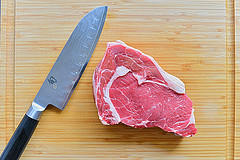Meat is an important part of most people’s diets, and it can take up quite a large chunk of your grocery budget. Unfortunately, meat is also difficult to store and has a shorter shelf life than other groceries. Here are a few tips that will help you to store meat properly and make it last longer!
- Keep your refrigerator at the proper temperature. In order to store meat in your refrigerator, it should be kept at or below 40 degrees. If you plan on freezing meat, the freezer should be kept at or below 0 degrees.
- Timing is everything. In order to safely store cooked meat, you must refrigerate it within two hours of eating. If you’re storing it raw, be sure to refrigerate or freeze it immediately.
- Store it in the proper containers. Be sure to refrigerate or freeze meat in a shallow container that is barely bigger than the meat itself. This will ensure that it becomes cold as quickly as possible and isn’t exposed to any air.
- Be cautious about freezing. Freezing meat is a great way to make your meat last longer, but you need to be cautious about freezer burn. Be sure to wrap meat thoroughly in plastic wrap, aluminum foil, or wax paper before storing the meat in the freezer.
Storage Times for the Refrigerator and Freezer [Foodsafety.gov]
Meat in the Refrigerator: How Long Does It Last? [Foodsafety.gov]
How to Store Food Properly in the Freezer and Fridge [Lifehacker]
Food Storage 101: Where and How Long to Keep Your Favorite Foods [Lifehacker]


 Equal Housing Opportunity
Equal Housing Opportunity